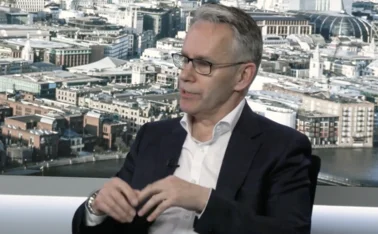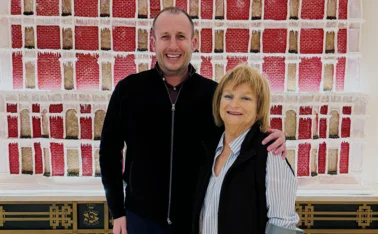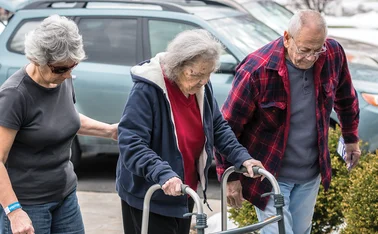
Taking a driverless car for a spin

Need to know
- The majority of additional weight in the car comes from metres and metres of wires
- The goal of each test includes examining the legal and insurance implications of how that technology interacts with real road situations
- The Department for Transport has announced a framework for a single insurance produce
UK projects are revealing the insurance implications of autonomous vehicles
The Wildcat is like a homemade DeLorean. The driver and passenger seats are crowded with boxes full of dials, a monitor displaying reams of binary and a fire extinguisher. The entire rear of the car is completely taken over with processors and sensors. Later, I’m told that the majority of additional weight in the car comes from metres and metres of wires.
But halfway through a careful circuit of a car park in Bristol University, something magical happens. The wheel starts turning on its own. The Wildcat is driving itself.
“It’s surprising how quickly you relinquish your own sense of being involved with guiding the vehicle,” said Professor Tony Pipe, deputy director of Bristol Robotics Laboratory.
“Within six minutes, I was already looking out the side window.”
The car, developed by a consortium comprised of BAE Systems, Axa Insurance, Bristol Robotics Laboratory, Atkins and many others, is the focus of the Venturer project - one of more than 30 autonomous vehicle tests being carried out across the UK.
The goal of each test is not only developing the technology for driverless cars, but examining the legal and insurance implications of how that technology interacts with real road situations.
The project received £5m in funding from government department Innovate UK in 2015. It started phase one of testing in May last year, and is due in the coming weeks to start phase two.
Phase one
Pipe said phase one was testing how quickly a human driver can pick up the ball when switching from autonomous to manual driving mode.
“The question is whether it is ever going to be sensible to give control back to a driver when he or she has already relinquished control,” he said.
“It’s clear that people will be able to disengage completely from driving in a highway situation. However, if there is a technical failure in the car, to get back in control again would be a challenge. How quickly the driver is able to do that, has important insurance and legal implications.”
The Department for Transport announced a framework for a single insurance product that would both cover a motorist when they are driving as well as the car when it is in automated mode.
The policy would incorporate both standard motor liability as well as product liability for an accident caused when the car is in autonomous mode.
David Williams, technical director for Axa, said: “What is a reasonable amount of time to attach liability back to an individual in the circumstances of taking back control of a vehicle?” he asked. “Is it five seconds? Is it 10 seconds? Or is it a minute? That’s what we’re trying to identify.”
The results will be published in a report in the coming months.
Phase two
In the first phase of the trials, the Wildcat was guided primarily by GPS.
A route was programmed on a map, and the car simply followed that route. In the past several months, the team at BRL has been installing more sensors in the car in anticipation of the second phase.
In that phase, the car would be making its own decisions on how to get to a given destination. The key test site will be junctions, and the team will look at how long it takes the vehicle to decide which way to turn.
Other factors would also be examined: when the vehicle turns on a street, how does it position itself in relation to other objects on the road?
“If it goes rather close to a cyclist, or if there’s a person who steps out in front of the car, what will it do in those circumstances?” asked Pipe. “We won’t ever be doing anything dangerous. Anything dangerous we would do it on the simulator.”
The simulator
The BRL is a warren of discrete projects. In dozens of little offices, there are human-looking robotic limbs on operating tables, bipedal robots looming over desks and what looks like moon buggies.
In one dimly lit room, there is a road car in front of three ceiling-to-floor monitor screens. On the monitors is a city – a composite made up of buildings from around the world. Other cars, pedestrians and cows dot the network of roads.
The car does not move, and when you drive, the city around you on the monitors instead moves. “Some people find it gives them motion sickness,” said Pipe.
When not working, staff at the BRL have used the simulator to enact a sedate imitation of console game Grand Theft Auto. “There’s no impact when you hit pedestrians or cows,” one member of staff tells us, disappointed.
The car itself has a dial which switches you into full autonomous mode. The steering wheel spins, the car changes lane, and you switch from driver to observer.
BRL is in the process of uploading the exact algorithm from the Wildcat to the simulator. The data from the virtual city will be coded to mimic as closely as possible the environmental data received through sensors on the Wildcat.
That way, the team can iron out any kinks in the algorithm before testing the vehicle in the same way on the road.
“We probably wouldn’t drive the vehicle too close to a cyclist without testing it many times on the simulator,” said Pipe.
Phase three
The third phase of the project is to test the Wildcat on the roads of Bristol. It is not known what technological conditions will need to be fulfilled for the car to be considered roadworthy.
Bristol and South Gloucestershire councils are parties to the consortium and keep close tabs on how the project is developing.
Pipe said the Venturer project was different from other driverless vehicle tests, which were mostly on highways.
“Most of the work that’s been done around the world to date has been on motorways,” he said. “That’s the low-hanging fruit and where you’d want to start. It’s the easiest from the technology point of view, because all the cars are going in the same direction and all at the same sorts of speeds.
“The short-term gains over the next decade or so will be on the highways. We’re interested in what will happen in more urban-type roadways, and how the legal situation will need to change in order to feed off the insurance. We are looking at that sort of stuff because that’s where it’s going to go next.”
What is the end goal of the project? “The idea is to turn it into a commercial entity – a company, or perhaps we sell the intellectual property,” said Carolyn Mitchell, project lead for Atkins, the company heading up the consortium. “At the very least we could certainly act as consultants.”
Williams said Axa was using the results of the tests to feed in directly to the government’s evolving legal framework on driverless cars. “Axa is trying to share its learnings in order to ensure there’s an insurance framework to get these vehicles on the road,” he said.
Who owns the data?
If an accident occurs, how are insurers able to tell whether the car was operating in an autonomous or a normal driving mode at the time? In the consultation over driverless cars last year, insurers pushed the government to establish rules that manufacturers had to pass on driver data to insurers in order to verify liability.
However, the General Data Protection Regulation, coming into force next year, will place ownership of that driver data in the lap of consumers. David Williams, technical director at Axa, said the rules could muddy the waters.
“I suspect that when the GDPR was being developed, it wasn’t with this sort of technology in mind,” he said. “It’s technically your data from the vehicle, although that’s not a view shared by all manufacturers at the moment.
“There are three clear data generation points: onboard, vehicle to vehicle, and vehicle to infrastructure. If you begin to imagine the number of parties involved in that ecosystem from manufacturers, to passengers, to infrastructure providers, to transport network operators, it’s difficult to say who would own that data.
“If you could create a data infrastructure where you could agree that certain sets of data are essential to all parties, from a foundational sharing aspect and everyone can build on that, that’s the most logical way forward.”
Cyber protection
In September a team of Chinese ethical hackers from Keen Security Lab successfully took control of the systems of a Tesla Model S from a distance of 12 miles.
The case illustrated the potential pitfalls with driverless cars. Just two months previously, Axa had warned in a report that a driverless car taken over by hackers could be used as a 'weapon'.
Is Pipe concerned that a teenage hacker could take over the Wildcat, causing an accident or compromising its systems?
“Yeah,” he said, sounding nonplussed. “I don’t think anybody can guarantee that won’t happen.
“It’s got basic cyber protection. BAE has used some of its cyber protection software. I’m not saying it’s completely watertight, but there aren’t enough of them around so that people are easily able to hack them. It’s a bit like how Macs are generally more secure than PCs, because they are less common.”
However Pipe said there was no temptation to make the car a closed system, immune from cyber attacks because it is unable to connect to the internet. “It makes things very difficult, because you’re unable to access GPS,” said Pipe.
He said manufacturers would be unable to push updates to the vehicle to ensure it was running more efficiently.
“Perhaps you have a shell in the centre, with a core code that cannot be altered except with a hard connection,” he said. “Where the balance will lie is not really known.”
The future
The science fiction future for our roads is that driverless cars not only connect to the internet to communicate with manufacturers, insurers and GPS, but also with other cars on the road to share information on hazards, smart city infrastructure like traffic lights, or even with pedestrians that voluntarily opt to wear sensors.
Pipe said that may become an issue later on. Sensors on cars were able to identify anomalous blobs around a lamp post, for instance, but weren’t necessarily able to recognise that as a person waiting to cross the road.
“A human driver would perhaps notice that, but it might be a bit of a challenge for the current technology,” he said.
In terms of the Wildcat, the closest thing to a near miss so far has been when a pedestrian walked out from behind a large hedge and to the edge of the road.
“The car didn’t register it and just carried on,” said Pipe. “However, it happened so fast that a human driver would have carried on as well.
“The car can’t sense there’s a person behind a hedge to a greater extent than what a human would be able to. It’s not magical.”

Motor Insurance World 2017
Driverless cars, changes in vehicle technology and innovation are among the subjects that will be covered in the 2017 Motor Insurance World.
Held on the 25th May at etc.Venues, Fenchurch Street, Karl Gray, the global head of casualty and motor at Zurich; David Williams, technical director, Axa UK; Ian Kemp, underwriting product director, commercial lines, RSA; and Nick Reid, head of automotive technology, Direct Line Group, are among the first names to be confirmed.
For details and to sign up to attend go to www.motorinsuranceworld.co.uk
Only users who have a paid subscription or are part of a corporate subscription are able to print or copy content.
To access these options, along with all other subscription benefits, please contact info@postonline.co.uk or view our subscription options here: https://subscriptions.postonline.co.uk/subscribe
You are currently unable to print this content. Please contact info@postonline.co.uk to find out more.
You are currently unable to copy this content. Please contact info@postonline.co.uk to find out more.
Copyright Infopro Digital Limited. All rights reserved.
As outlined in our terms and conditions, https://www.infopro-digital.com/terms-and-conditions/subscriptions/ (point 2.4), printing is limited to a single copy.
If you would like to purchase additional rights please email info@postonline.co.uk
Copyright Infopro Digital Limited. All rights reserved.
You may share this content using our article tools. As outlined in our terms and conditions, https://www.infopro-digital.com/terms-and-conditions/subscriptions/ (clause 2.4), an Authorised User may only make one copy of the materials for their own personal use. You must also comply with the restrictions in clause 2.5.
If you would like to purchase additional rights please email info@postonline.co.uk








